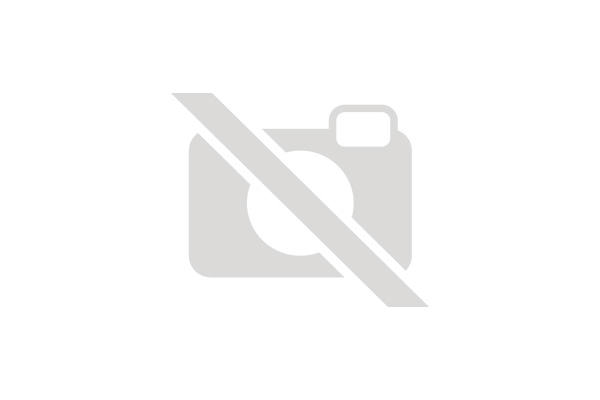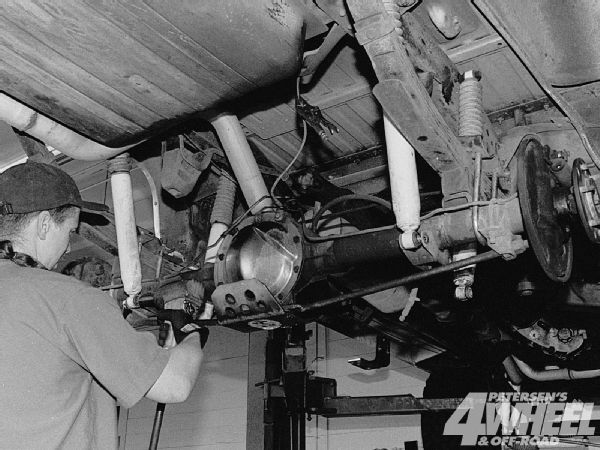 Rick Péwé
Editor-in-Chief, 4Wheel & Off-Road
Photographers:
Rick Péwé
Rick Péwé
Editor-in-Chief, 4Wheel & Off-Road
Photographers:
Rick Péwé
Snapping a rear axleshaft is a sure way to ruin a fine day of 'wheeling, especially when you knew it wasn't strong enough to handle what you were going to dish out. That's why one of the most popular upgrades on a 4x4 is the rear axle. Most late-model factory offerings are generally undersized in this department, either to save weight or cost, but the addition of bigger tires and engines can snap a shaft like a toothpick.

Some of the more likely candidates for rear-axle upgrades are the late-model Chevy and GMC 1/2-ton trucks, Blazers, Tahoes, and Suburbans. These heavy trucks were designed to use the Corporate 12-bolt rearend, which was more than sufficient in the strength department. However, from '81 models on, these big vehicles received the woefully inadequate Corporate 10-bolt axle, and gear shops once again made a good living. Swapping in the earlier 12-bolt is good for a stronger ring-and-pinion, but the axle diameter and strength is still the same.
One way to really beef the rear under these 1/2-ton jobs is to replace it with a 3/4-ton truck axle, but as "Rear Axle Swap Tips," in this issue, will show you, other problems (read: dollars) will be encountered. But something better for the hard-core GM 'wheeler is readily available, with a minimum amount of hassles and a reasonable amount of money.
 The axleshafts are the same length between the 10- and 14-bolt axles if overall axle assembly is the same, but the spline count and diameter are different. The early 28-spline 10-bolt (right) measures 1.20 inches, as opposed to the 14-bolt shaft, which is 1.37 inches in diameter. The higher 33 spline count of the 14-bolt also adds strength and durability.
The axleshafts are the same length between the 10- and 14-bolt axles if overall axle assembly is the same, but the spline count and diameter are different. The early 28-spline 10-bolt (right) measures 1.20 inches, as opposed to the 14-bolt shaft, which is 1.37 inches in diameter. The higher 33 spline count of the 14-bolt also adds strength and durability.
The GM 9 1/2 Corporate 14-bolt is used in a variety of 3/4-ton GM products, is much stronger than the 10-bolt and even the 12-bolt axles, and is relatively cheap and plentiful. But wait, you say, isn't the 14-bolt an eight-lug, heavy-duty axle? Yes, all of the early 14-bolt axles had 10 1/2-inch ring-gear, full-floating axles and an eight-lug wheel pattern. But the later 14-bolt axle is a semifloat design with a 9 1/2-inch ring gear and is available in eight- and six-lug designs.
Vehicles with the smaller 14-bolt axle have been equipped with various widths. To match the track of your truck, measure the wheel flange-to-flange dimension of your truck's rearend and the 14-bolt rearend that you want to swap in. Gear ratios vary, but if you verify that you have a match to your truck or what you want the gear ratio to be, even more money can be saved. In this case an '85 Suburban received an axle from a '96 Tahoe, and although the flange-to-flange measurement was the same, a ratio change needed to be performed.
Although the 10- to 14-bolt swap isn't a direct bolt-in, any competent shop should be able to handle the details we'll show you here. We went to Drivetrain Service Center, where manager Rody Jarve performed this operation, which he has done many times before. Even on custom jobs with a bunch of nonstandard items being addressed, the whole job should take less than a day or two. The procedure led to a much stronger rearend for the heavy-hitting Suburban.
PhotosView Slideshow














